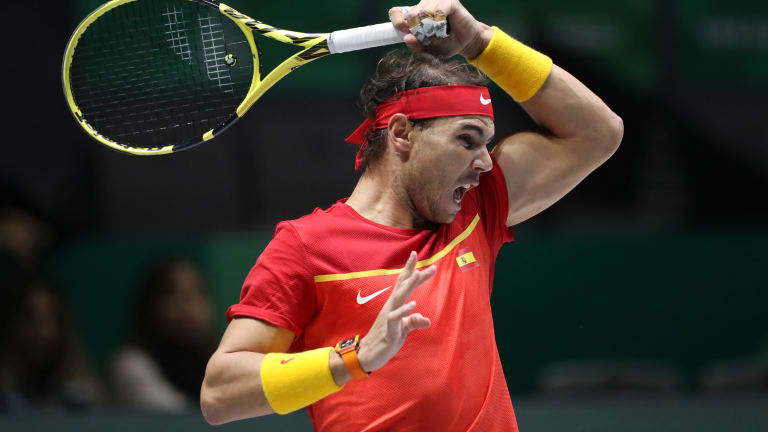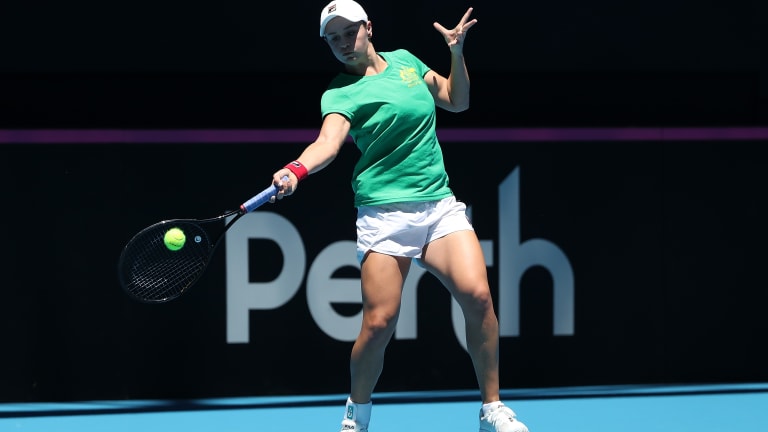Mindlessly hitting crosscourt forehands without any purpose is both boring and ineffective. Here’s a simple drill, using targets, that will actually help you improve.
Put down three targets in the deuce court (the forehand side for right-handed players): one deep in the corner; one near where the service line and sideline meet; and one just a few feet in front of the net. Now you can work on three crosscourt shots: a deep forehand; an angled forehand; and a drop-shot forehand. You can also do this in the ad court with your backhand.

